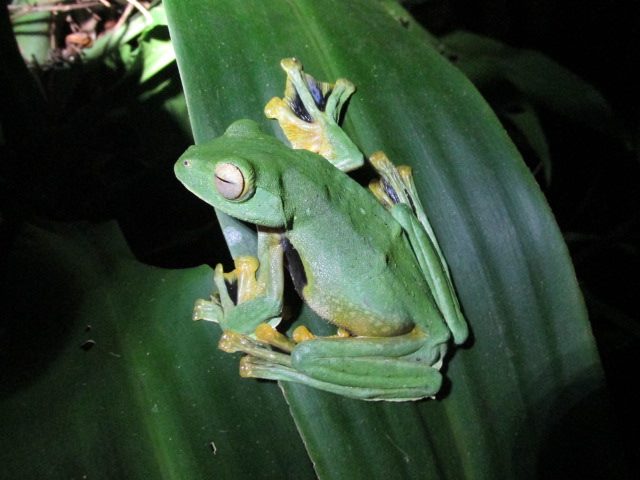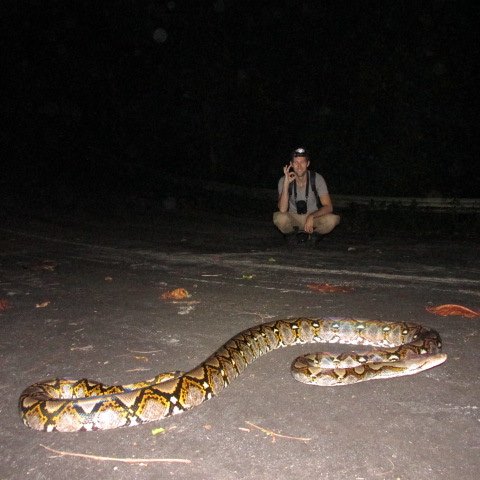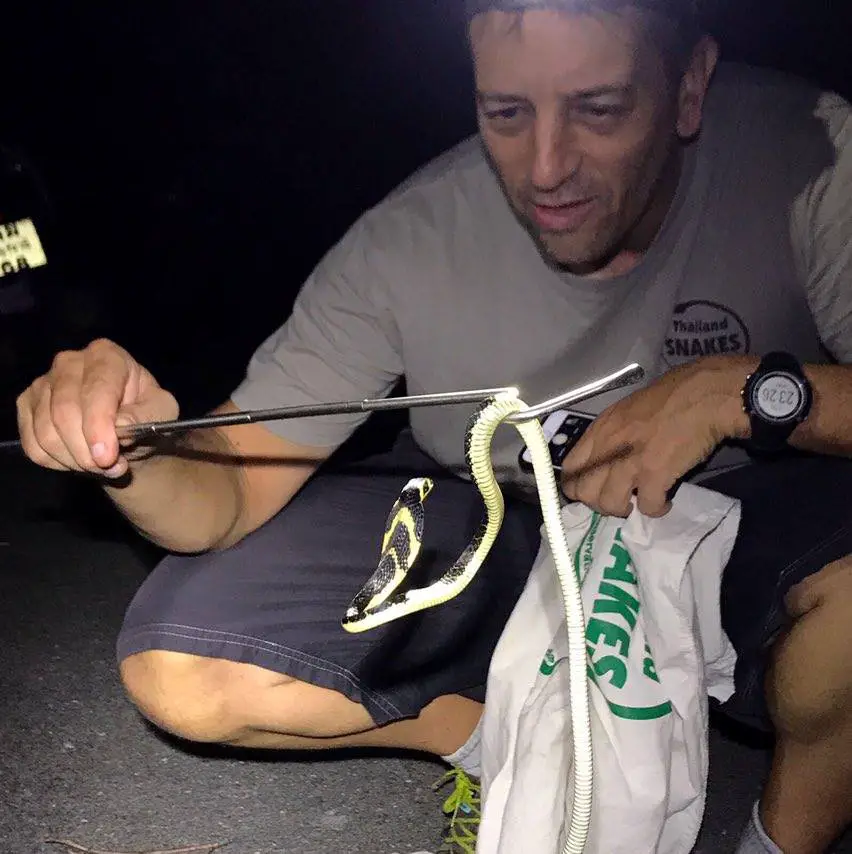21 Photography Tips for Southeast Asia Rainforests
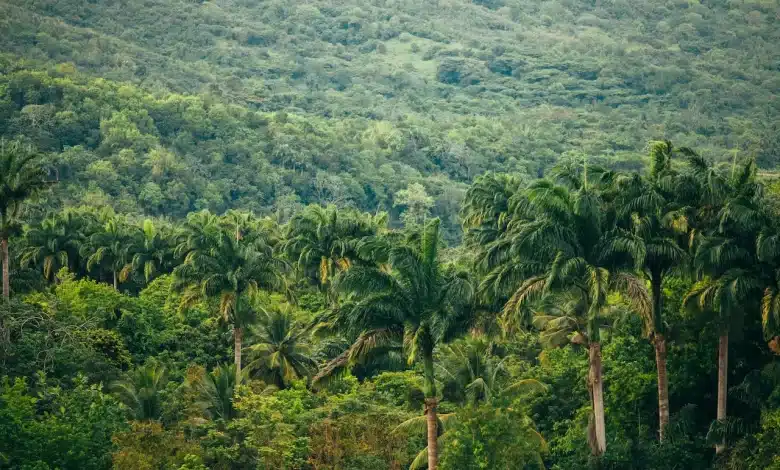
[Page updated: 7 April 2023]
I’ve been shooting in a very hot and very humid rainforest in Krabi over the last couple of days and nights. I’ve been doing this for nine years because I love shooting wildlife in their natural environment.
Today I figured I’d have enough for an article full of tips to help you if you have something similar planned. If you’re going to spend some time shooting in Southeast Asia or anywhere else that is hot and humid, these tips should help you.
When you’re done reading these tips, head over to see about our Wildlife/Nature Photography Tours in Krabi and other southern Thailand areas.
21 Tips for Shooting Wildlife and Nature in Southeast Asia Forests
1. Use weather-sealed camera body and lenses.
Easier said than done, I know because these tend to be top-of-the-line cameras and lenses. I have lost enough Sony CyberShot camera bodies to the humidity in Thailand that four years ago I decided to buy something more resistant to water.
At least I thought it was, and it has proven to be OK for three solid years of use (our Nikon D5100). I’ve taken that camera a couple of hundred times into the rainforests of Thailand, and it’s still working fine. No issues. Of course, I expect it to die any day now.
I have friends that have lost unsealed Nikon and Canon bodies to the elements after an average of about three years of use. The Nikon D7000 is an older and still good DX camera you can pick up for $600 USD, with some degree of weather sealing. The D7500 (Amazon) and D500 are the latest, and quite a bit better.
Ideally, when you take your photo equipment from air conditioning to the hot humid air outside, you’ll be able to do it gradually. If not, some condensation can occur. You can see it fogging your lenses.
Or worse, you can’t see it and it is fogging the inside of your DSLR. It takes time to dissipate. What I do is go from my house to my a/c car. I run the air and then crack the window a bit… gradually opening the window more and more to ease the temperature up. Sometimes I forget. Sometimes I have people in the car that won’t stand for open windows!
2. Bring a diver’s waterproof bag.
You never know when it’s going to absolutely pour down rain. If your backpack isn’t completely waterproof, and maybe even if it is, bring along a 10-20 liter waterproof bag to quickly dump your cameras, phone, and other electronics into during a heavy downpour.
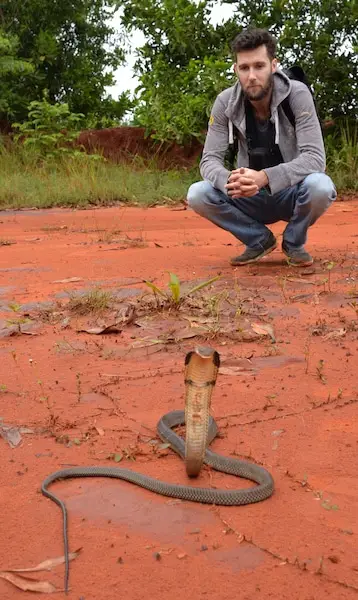
3. Don’t change lenses unnecessarily.
If at all possible, bring two camera bodies, each with a different lens so you don’t need to open a camera body up and expose it to the humid air. With two cameras you can shoot quickly too.
Then, there’s the weight of an extra body… everything is a trade-off when shooting photographs in less-than-ideal conditions. The air humidity in Thailand’s south is nearly always more than 50%, and usually closer to 70%.
That’s wet air! I also bring a Nikon underwater all-weather camera in case it’s pouring rain and I still need to get a photo or 1080p video. This happened recently when I saw a Wagler’s pit viper on a trail during a hard rainstorm. I was SO happy to have that Nikon AW100! Since then, this Olympus Camera is what I would buy.
4. Store your cameras, lenses, and other electronics in air-conditioned rooms.
Even if the air isn’t running all the time, the air will stay drier than the air in other rooms which are subject to the humid outside air.
5. Bring clean-up materials.
I bring extra lens paper and liquid cleaner for my lenses. I bring dry cloths to wipe down my camera when sweat from my face or hands drips on it. I bring the wet wipes for babies to wipe my hands off once every couple of hours so I’m not holding the camera with sweaty hands and pushing salty sweat into every button I push, or dial I turn.
6. Don’t use a sticky protective film on your LCD screen.
I use the big plastic one that comes with the kit. The reason being, the sticky film will trap and hold water – sweat, under it and around the edges because it touches the glass directly.
I think it’s better to have the plastic protective cover Nikon gives because I don’t think it’s flush up against the glass, allowing the area to dry quicker.
7. Wear a hat to protect your head from mosquitos and slow loris urine.
Last night I felt a spray of droplets hit my hat as I walked under the thick canopy of trees looking for snakes and other reptiles. I backed away and looked up. There above me was a stationary slow loris, Tapetum lucidum with eyes glowing brightly, staring down at me.
She wasn’t moving… so that meant she just let loose her bladder on my head. Luckily I was wearing a wide-brimmed hat. This happens often with macaques in the trees. A hat is always a good idea, especially for the mosquitos that are active day and night.
I wear a long-sleeve very lightweight runner’s jersey that keeps the mosquitos off my arms, and I wrap a snake bag or lightweight towel around my neck to protect it.
I wear long marine cammy pants with a drawstring at the ankle and tie them tightly to keep ants and termites off my legs. Termites really bite hard. I tuck my shirt into my pants. Yes, it’s warm and I sweat, but better that, than mosquitos, ants, termites, or spiders biting me.
I hate using mosquito spray, but I have no choice. I spray my boots, socks, and lower pants. I spray the front and back of my neck. I don’t spray the back or front of my hands because sweat will take the chemicals from my hand into my camera. I spray far away from my camera gear so no mist can reach it.
8. Carry extra batteries and an extra flashlight.
I carry extra lithium-ion or AAA batteries for my headlamps, and I also almost always have two extra headlamps with me just in case one goes out, or someone else needs one. It’s pretty impossible to herp at night in the rainforest without headlamps!
Oh, I also have a lighter in my backpack to start a fire for light and to keep away the creepy crawlies. At least I think it would keep them away.
9. Go with someone if at all possible.
Especially if you’re not familiar with the area you’re about to explore. A snake bite, a twisted ankle, a pack of dogs, a bear… you never know what you’re going to encounter in the forest in Southeast Asia. Better to have a friend with you at all times. That doubles your supplies like batteries and flashlights too.
10. If you’re hiking far, stash some water bottles as you walk.
This way you can carry a lot of water at the beginning of your hike and gradually drop them on your path as you go. Hide them of course. I do a weekly run up a mountain close to my house, on a usually deserted trail.
I planted a yellow Gatorade under a bench, behind a post about midway up the mountain so I’d have it when I came back down. I ran up to the top of the hill, and came back. There were two guys from Denmark sitting on the bench, exhausted. One was drinking my Gatorade! I laughed it off because the guy drinking it said he thought it was a gift from God!
So, hide your stash under leaves to avoid this happening to you. If there are monkeys around, don’t hide your drinks, the monkeys will grab them if they have had any contact with humans providing them food before.
Bring enough water and other liquid to power you through your field trip, but always have some water on you. I have had a couple of occasions where I was very glad to have not just a sports drink, but also drinking water to rinse my eyes.
Once I had a bug in my eye that just wouldn’t come out. The other time I am not sure what happened but my eye began burning intensely for some reason. I have no idea what happened, but I rinsed it for 10 minutes and the pain faded away.
11. Wear gore-tex hiking shoes/boots.
No matter where I’ve been hiking in the rainforest, there is almost always either water or watery mud I need to cross to get me where I’m going. If I’ve decided to go minimalist and just wear my running shoes, my feet get wet and I get blisters.
If you’re doing an extended hike you might just bring 2 pairs of shoes, one for wet crossings and one for dry walking.
12. The ultimate snack food for long hikes? Dates.
They are light and packed with calories. Oh, and they’re delicious. Twenty-five small dates can power you through an entire day. Good to have on long hikes!
13. Know the dangers in the rainforest.
Here in Southern Thailand, we have scorpions, black widows and brown recluses (both worldwide), venomous snakes, Asiatic black bears, and Malayan sun bears. In some forests we have tigers, but not the ones I spend time in! Tigers are not on my agenda.
The most dangerous thing in the rainforest? Mosquitos. We have a number of afflictions we can catch from biting mosquitos like Dengue, Chikungunya, Malaria, Yellow Fever, and others.
14. Stay on the trail.
I have had to take part in rescue operations a couple of times for hikers lost in the dense forest close to my home. It isn’t any fun in the middle of the rainforest without food, water, or light. If you’re going to go off-trail – it’s wise to have some colored plastic tape (strips) with you that you can wrap around a tree to mark where the trail is.
Yellow, red, or orange works best. If you have an iPhone, there is an electronic compass app that comes with it. Get it if you don’t have it.
15. Carry your camera on a strap on your neck as you walk.
Don’t leave it in your bag, you will need it at a moment’s notice and you’ll waste valuable time pulling your camera from your bag.
16. Pre-adjust your camera settings for the light.
I usually set my ISO at 1000 when using my lens set around F/5.6. Take some test shots and see what your exposure looks like in the LCD. Do you need flash? Though I like natural light photos of wildlife, sometimes I add flash. It’s a last resort, but a necessary one, like when shooting at night.
At night presetting everything is essential. Even on my relatively high-end Nikon D610, the buttons are not backlit so I can’t see them at night. I’m constantly fumbling around in the dark trying to change a setting with one hand while holding the tail of a lizard or snake.
Not ideal. I use the “M” mode for manual and preset my shutter first – depending on the lens I’m using. If I have the 100mm macro lens, which I usually do, I set the shutter at 1/125. If I was shooting with a 50mm, I’d use 1/60th. If a 200mm, I’d use 1/250th.
These shutter speeds have proven fast enough for me to hold my camera with one hand and shoot. Test this on your own and see what shutter you need for the lens you’re using.
Aperture is next. I need F/5.6 or, ideally, F/8.0 to get a reasonable amount of depth-of-field for shooting snakes, spiders, scorpions, lizards, bugs, or bats.
Next, on my Nikon camera is a setting under the “Shooting Menu” for ISO sensitivity settings. I choose “100” for ISO Sensitivity, “ON” for Auto ISO Sensitivity Control, “3200” for Maximum Sensitivity, and “1/125” for Minimum Shutter Speed. This means it will dynamically choose an ISO that works with the shutter and aperture I’ve chosen.
Take some test shots on the trail before you get started walking around. Make sure the exposure is correct. Check the ISO of the test photos. Are they within the right range to give you relatively noise-free photos?
On my camera, anything up to ISO 3200 is OK for me, though I’d prefer ISO 800 and under. It all depends on how much light you’ll have and how far away from your subject you’ll be shooting. This affects how intense your flash will be. If you have multiple flashes triggering for one shot, you can get away with setting a better ISO range like 100 to 400.
Don’t forget to manually set your WB (White Balance) to flash, if you’re going to be using flash exclusively.
17. Experiment using flash levels that are -1, -2, etc.
Harsh flash shots of animals at night can turn up horrible results. I took a shot of a frog in a tree the other night that turned out junk. The reason was, his skin was wet enough to reflect the flash in many small reflections.
18. Throw a diffuser over your flash to take the edge off the light.
Ideally, you’ll use a plastic diffuser made for your flash, or a small light box that covers it. But, you can use anything, toilet paper, pantyhose, or a thin and light cloth. Don’t tape the diffuser to your flash unit, it might get too hot and melt the tape. Use rubber bands to fasten it.
19. Wear a headlamp, but use your handheld flashlight.
Mosquitos, moths, and other bugs can be overwhelming, and in your eyes when you are using a headlamp. I have ten times more bugs in my eyes when I use the headlamps, so I use a handheld flashlight for the majority of my field herping at night. If necessary as I’m shooting, I turn on the headlamp and squint my eyes!
20. Plastic zip bags for everything.
I have 3 different sizes of plastic zippy bags that I use for all the important items in my bag. Mobile phones, memory cards, batteries, and chargers – all go into these little zip bags.
21. DaKine bags.
In 2002 I bought a $ 140-day backpack. I hiked with that pack hundreds of times on the trails in Hawaii and Thailand. That bag never rotted, despite my not washing it more than maybe six times in 11 years. Finally one of the straps started to tear and I replaced the bag. Eleven years of very rigorous use! Needless to say, I was happy with it. DaKine also makes photography gear bags. Chase Jarvis uses the “Reload” 30-liter bag. Most of you can use the slightly smaller 25liter “Mission” bag – Dakine Photography Backpack – Mission 25 liter
Wrapping It Up
Shooting photographs in humid and very hot conditions, even at night, requires a lot of foresight and planning. What you choose to wear can have a significant effect on the outcome of your herping because if you wear the wrong thing, you might only be out for 2-3 hours instead of 5-6 if you were as comfortable as you can be.
If you have the luxury of a vehicle you’re bringing with you, you can bring lots of options and leave them in the car for later if you need them. Say you aren’t seeing any Malayan pit vipers and your feet hurt. You might opt for that pair of running shoes instead of rubber boots.
A lot of people just stop herping when the rain starts falling. That’s a big mistake, especially here in the south around Krabi and further south. The weather stays warm enough for snakes, and some snakes are energized by the fresh fallen rain and temperatures and they become active.
Snakes like reticulated and blood pythons, Malayan kraits, all the cat snakes, sunbeam snakes, and of course the water snakes can all be found during and after rain.
Anyway, good luck out there!

